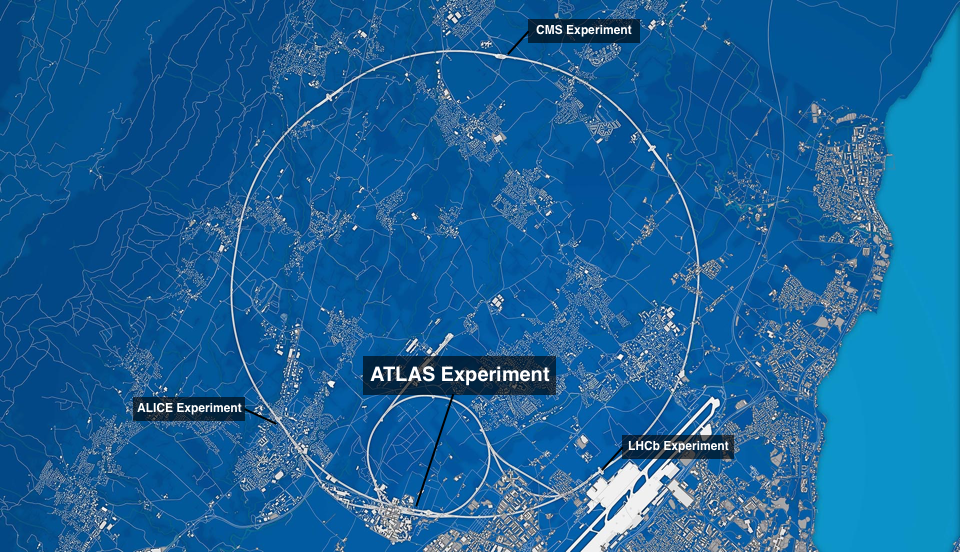The ATLAS Experiment
Push the frontiers of knowledge
ATLAS is a general-purpose particle physics experiment at the Large Hadron Collider (LHC) at CERN. It is designed to exploit the full discovery potential of the LHC, pushing the frontiers of scientific knowledge. ATLAS' exploration uses precision measurement to push the frontiers of knowledge by seeking answers to fundamental questions such as: What are the basic building blocks of matter? What are the fundamental forces of nature? What is dark matter made of?
Global Collaboration
ATLAS is a collaboration of physicists, engineers, technicians, students and support staff from around the world. It is one of the largest collaborative efforts ever attempted in science, with over 5500 members and almost 3000 scientific authors. The success of ATLAS relies on the close collaboration of research teams located at CERN, and at member universities and laboratories worldwide.
Experimental behemoth
ATLAS is the largest detector ever constructed for a particle collider: 44 metres long and 25 metres in diameter. Its construction pushed the limits of existing technology. ATLAS is designed to record the high-energy particle collisions of the LHC, which take place at a rate of over a billion interactions per second in the centre of the detector. More than 100 million sensitive electronics channels are used to record the particles produced by the collisions, which are then analysed by ATLAS scientists.
Understanding the Universe
ATLAS physicists are studying the fundamental constituents of matter to better understand the rules behind their interactions. Their research has lead to ground-breaking discoveries, such as that of the Higgs boson. The years ahead will be exciting as ATLAS takes experimental physics into unexplored territories – searching for new processes and particles that could change our understanding of energy and matter.

ATLAS Across Time
The approval of the ATLAS Experiment was an important milestone in the history of particle physics – but it was just the first step in a long journey. Making ATLAS a reality required years of innovative developments in technology and physics. Learn the history of its development in the timeline below.
